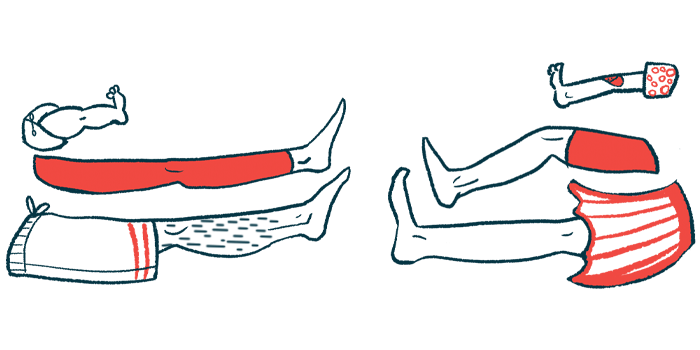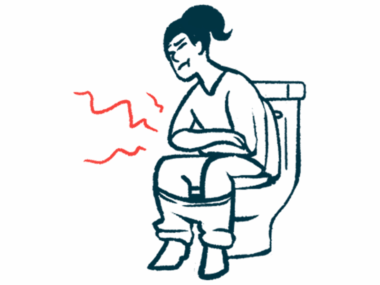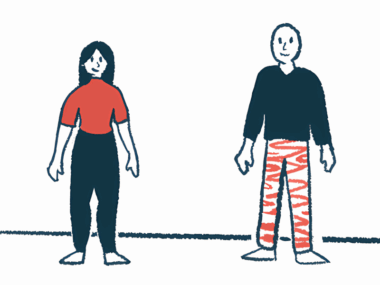Electrical Stimulation Helps With Bladder Control in MS, Study Finds
PTNS plus pelvic floor exercise led to reductions in frequent and urgent urination
Written by |

Posterior tibial nerve stimulation (PTNS) — a procedure that delivers electrical stimulation to the bladder through nerves in the leg — can reduce symptoms of an overactive bladder in people with multiple sclerosis (MS), according to results from a small trial.
The findings indicate that adding PTNS to pelvic floor exercise is more effective than exercise alone for the problem of frequent and urgent urination in MS patients.
The study, “Posterior tibial nerve stimulation as a neuromodulation therapy in treatment of neurogenic overactive bladder in multiple sclerosis: A prospective randomized controlled study,” was published in Multiple Sclerosis and Related Disorders.
Abnormal nerve signals cause the muscle around the bladder to be overactive
The vast majority of MS patients experience bladder-related problems such as frequent or urgent urination, which can be among the most annoying symptoms of the disease. Urinary symptoms generally develop because of abnormal nerve signals that cause the muscle around the bladder to be overactive and tense up, a condition referred to as neurogenic overactive bladder (NOAB).
PTNS is a nonsurgical procedure where a needle is used to deliver electrical stimulation to nerves in the leg. This stimulation may help to relax the muscles around the bladder, thereby easing urinary symptoms in MS.
A team led by scientists at Cairo University, in Egypt, conducted a small clinical trial (PACTR202102753683877) to evaluate the efficacy of PTNS for controlling MS-related bladder symptoms. The study enrolled 40 men, ages 20 to 40, with relapsing-remitting MS and moderate NOAB symptoms.
The participants were divided into two groups. All of them underwent a physical training program to strengthen their pelvic floor muscles, given three times per week for one month. One group also received PTNS (three 45- to 50-minute sessions per week for one month), while the other group did not, acting as the control.
According to the researchers, this is one of the first studies to explore the benefits of PTNS plus exercise, compared to exercise alone.
Posterior tibial nerve stimulation led to greater decrease in nighttime urinations
Prior to the interventions, participants reported on average four episodes of nighttime urination episodes each night. Following the intervention, the frequency of nighttime urinations decreased in both groups, but the decrease was significantly greater for patients given PTNS: at the end of one month, nighttime urination happened about 1.65 times per night in the PTNS group, compared to 3.05 per night for controls.
The frequency of urination during the day also decreased in both groups, from about 10 to five per day, with no significant difference between the two groups. However, frequency of incontinence (being unable to hold urine) decreased significantly in the PTNS group (from 2.9 to 1.5 episodes), but did not significantly change in the control group (2.65 before treatment vs. 2.25 after the intervention).
At the trial’s start, participants reported on average about three episodes of having to urinate urgently per day. After the intervention, the frequency of urinary urgency was significantly lower among patients given PTNS (1.2 episodes per day) compared to the control group (2.25 episodes a day).
PTNS can be considered a safe and effective treatment option for [neurogenic overactive bladder] symptoms in people with MS and superior to pelvic floor muscle training
Analyses of bladder capacity showed a notable increase in both groups, though the magnitude of the increase was significantly higher for patients given PTNS than controls (47.5% vs. 25.5%). Tests of bladder compliance — a measure of pressure in the bladder — showed similar results, improving by 61.4% in the PTNS group and 32.4% in the control group.
Both the exercise intervention and PTNS were overall well-tolerated by the study participants. Two participants given PTNS reported mild leg cramping, but otherwise there were no noteworthy safety issues.
“PTNS can be considered a safe and effective treatment option for NOAB symptoms in people with MS and superior to pelvic floor muscle training,” the researchers concluded.
The team said that the study is limited by its small size and short duration, highlighting a need for more research. Additionally, it included only male participants, so the results may not be applicable to female patients.







